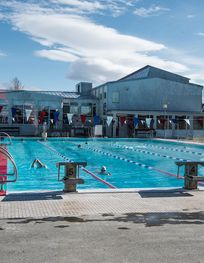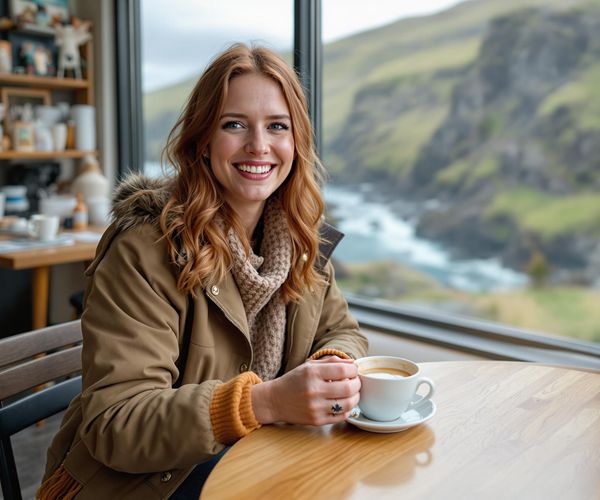
Reykjavik: The Gateway to Iceland's Natural Wonders
Explore Reykjavik, Iceland's vibrant capital, and gateway to stunning natural wonders, rich history, and a lively arts scene. Discover the magic of the land of fire and ice.
Reykjavik, the capital of Iceland, is a vibrant and modern city that serves as a perfect introduction to the country's breathtaking landscapes and unique culture. Nestled along the coastline, Reykjavik boasts stunning views of the Atlantic Ocean and is surrounded by mountains, providing a picturesque backdrop for visitors. The city is known for its colorful houses, lively arts scene, and rich history. Stroll through the charming streets to discover an array of cafés, shops, and museums. Don’t miss the iconic Hallgrímskirkja church, which offers panoramic views from its tower. The Harpa Concert Hall, with its striking glass facade, is another architectural gem that hosts a variety of cultural events. Reykjavik is also a gateway to Iceland's famed natural attractions. A short drive from the city will take you to the Golden Circle, where you can marvel at the Geysir geothermal area, the stunning Gullfoss waterfall, and the Thingvellir National Park, a UNESCO World Heritage site. The city's proximity to these wonders makes it an ideal base for exploring Iceland's dramatic landscapes, from glaciers and volcanoes to hot springs and black sand beaches.
Local tips in Reykjavik
- Dress in layers. The weather can be unpredictable, so be prepared for all conditions.
- Take advantage of the Reykjavik City Card for free entry to museums and unlimited bus travel.
- Visit the local swimming pools. They are a big part of Icelandic culture and a great way to relax.
- Plan your visit to the Blue Lagoon in advance, as it is a popular attraction and can get booked up.
- Try traditional Icelandic cuisine, such as lamb soup and skyr, for an authentic culinary experience.
- Consider renting a car to explore the surrounding natural attractions at your own pace.
Neighbourhoods in Reykjavik
Reykjavik: The Gateway to Iceland's Natural Wonders
Reykjavik, the capital of Iceland, is a vibrant and modern city that serves as a perfect introduction to the country's breathtaking landscapes and unique culture. Nestled along the coastline, Reykjavik boasts stunning views of the Atlantic Ocean and is surrounded by mountains, providing a picturesque backdrop for visitors. The city is known for its colorful houses, lively arts scene, and rich history. Stroll through the charming streets to discover an array of cafés, shops, and museums. Don’t miss the iconic Hallgrímskirkja church, which offers panoramic views from its tower. The Harpa Concert Hall, with its striking glass facade, is another architectural gem that hosts a variety of cultural events. Reykjavik is also a gateway to Iceland's famed natural attractions. A short drive from the city will take you to the Golden Circle, where you can marvel at the Geysir geothermal area, the stunning Gullfoss waterfall, and the Thingvellir National Park, a UNESCO World Heritage site. The city's proximity to these wonders makes it an ideal base for exploring Iceland's dramatic landscapes, from glaciers and volcanoes to hot springs and black sand beaches.
When is the best time to go to Reykjavik?
Iconic landmarks you can’t miss
Hallgrimskirkja
Discover Hallgrimskirkja, Reykjavik's iconic church blending modern architecture with stunning views, a must-visit for every traveler in Iceland.

Perlan
Explore Perlan in Reykjavik: A stunning natural history museum featuring an ice cave, planetarium, and breathtaking views of the Icelandic landscape.

Sun Voyager
Discover the Sun Voyager in Reykjavik, a mesmerizing sculpture that honors Iceland's seafaring legacy with stunning ocean views.
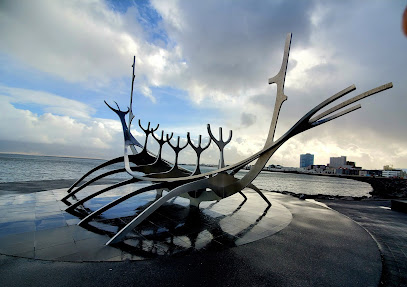
National Museum of Iceland
Explore Iceland's vibrant history at the National Museum of Iceland, where artifacts and stories come together to reveal the island's unique cultural heritage.
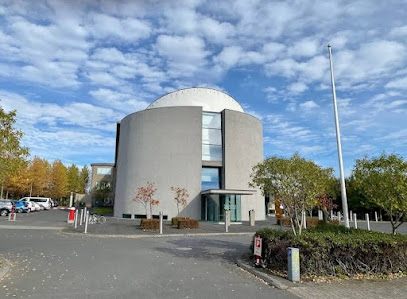
The Reykjavik Food Walk
Explore the culinary delights of Reykjavik with the Reykjavik Food Walk, where local flavors meet rich Icelandic history.
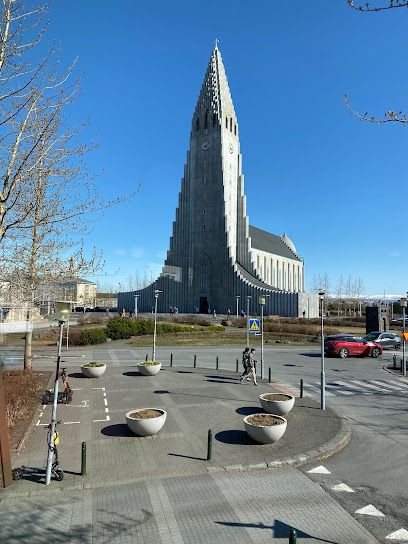
Rainbow Street
Discover the lively charm of Rainbow Street in Reykjavik, a vibrant hub filled with colorful architecture, local art, and delicious culinary delights.
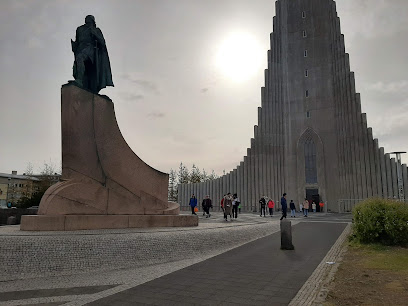
Saga Museum
Explore the rich history of Iceland at the Saga Museum, where Viking legends come to life through immersive exhibits and captivating storytelling.
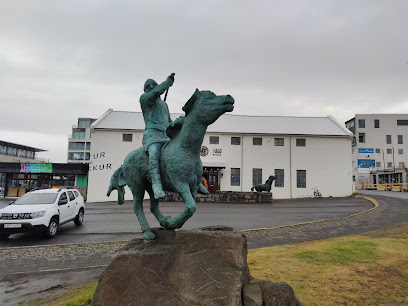
Lava Show
Discover the thrilling Lava Show in Reykjavik, where volcanic eruptions come to life in a captivating and educational experience.
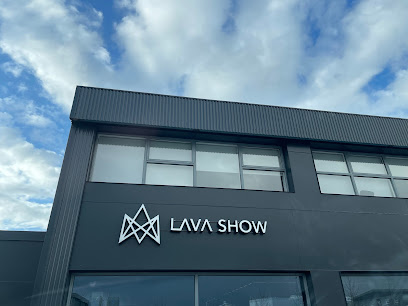
Höfði House
Discover Höfði House, a historical landmark in Reykjavik where pivotal moments in history took place amidst stunning natural beauty.
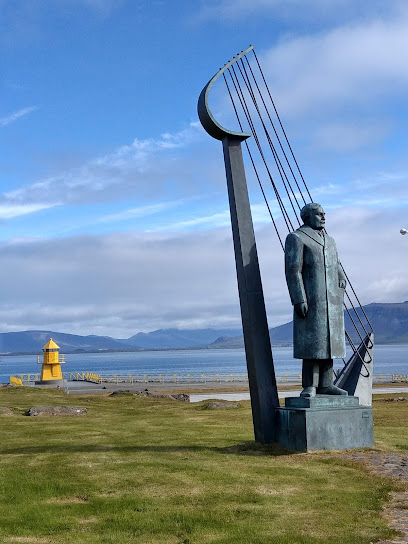
The Settlement Exhibition
Explore the Viking Age at The Settlement Exhibition in Reykjavik, where history comes alive through immersive exhibits and archaeological discoveries.
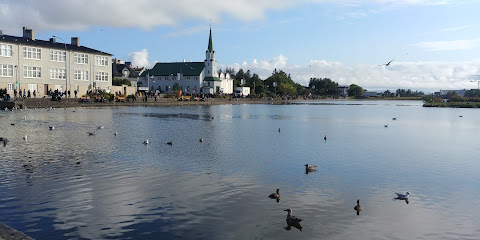
Árbær Open Air Museum
Experience Iceland's rich cultural heritage at Árbær Open Air Museum, a charming destination showcasing traditional life through interactive exhibits and historic buildings.
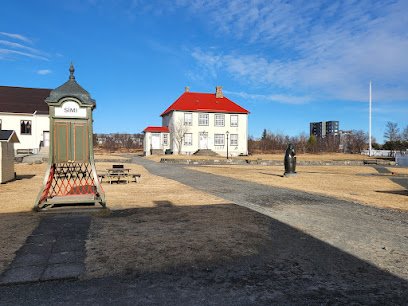
Reykjavík Maritime Museum
Explore the captivating maritime history of Iceland at Reykjavík Maritime Museum, where the sea's influence on culture and economy comes to life.
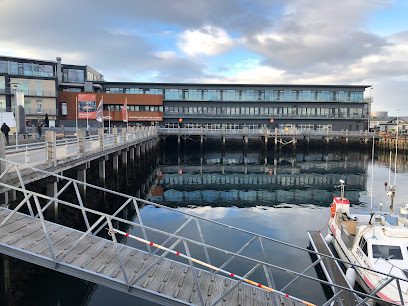
Cathedral of Christ the King
Explore the breathtaking Cathedral of Christ the King in Reykjavik, a stunning blend of architecture, history, and spirituality that enchants every visitor.
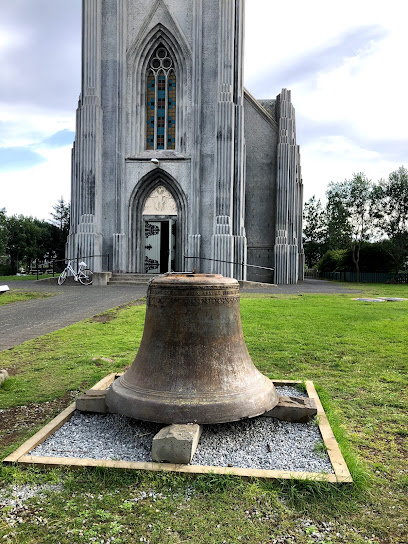
Reykjavík Art Museum Hafnarhús
Explore the vibrant world of contemporary art at Reykjavík Art Museum Hafnarhús, showcasing Icelandic and international talent in a unique setting.
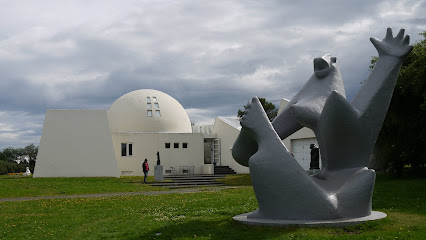
Grótta Island Lighthouse
Experience the stunning views and rich maritime history at Grótta Island Lighthouse in Seltjarnarnes, Iceland - a must-visit tourist attraction.
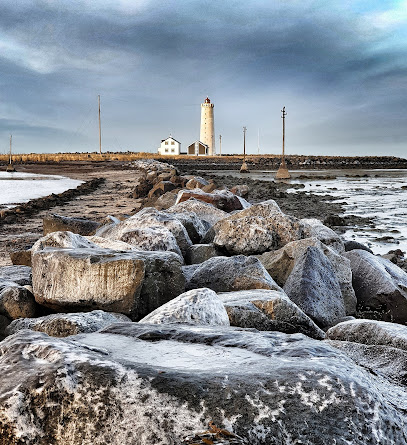
Unmissable attractions to see
Blue Lagoon
Discover the rejuvenating powers of the Blue Lagoon, a breathtaking geothermal spa in the heart of Iceland's volcanic landscape, perfect for relaxation and wellness.
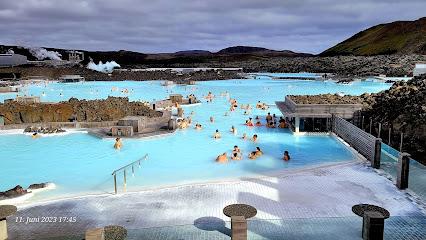
Thingvellir National Park
Explore the breathtaking landscapes and rich history of Thingvellir National Park, a UNESCO World Heritage Site in Iceland.
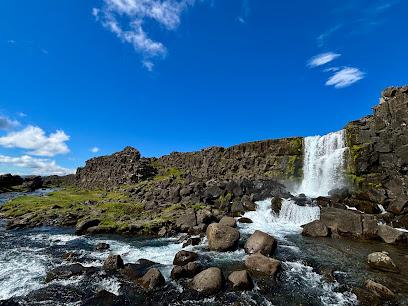
Hallgrimskirkja
Explore Hallgrimskirkja, Reykjavik's iconic church, featuring stunning architecture, serene interiors, and breathtaking panoramic views of the city.
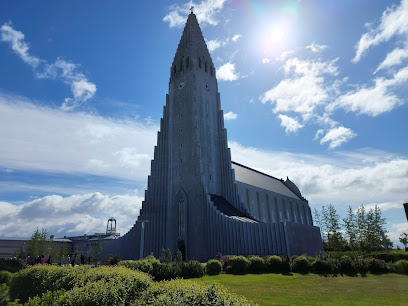
Sun Voyager
Explore the Sun Voyager in Reykjavik, a stunning sculpture symbolizing Iceland's Viking heritage and offering breathtaking coastal views.
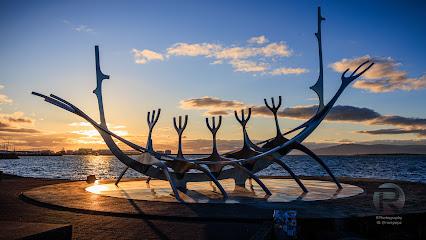
Harpa Concert Hall and Conference Centre
Explore Harpa Concert Hall, Reykjavik's architectural wonder and cultural hub, featuring concerts, art exhibitions, and stunning waterfront views.
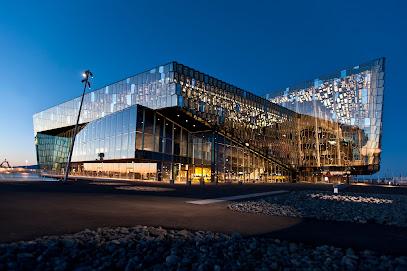
Sky Lagoon
Experience the ultimate relaxation at Sky Lagoon, where Iceland's geothermal waters meet stunning ocean views for an unforgettable spa experience.
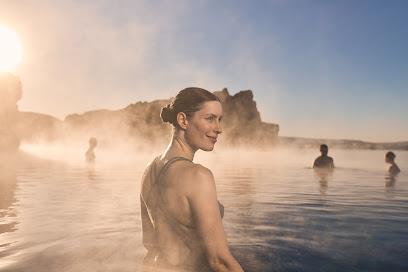
Öxarárfoss
Experience the breathtaking beauty of Öxarárfoss Waterfall in Thingvellir National Park, a UNESCO World Heritage site showcasing Iceland's stunning landscapes.

Tröll Expeditions HQ
Discover Iceland's breathtaking landscapes with expert tours from Tröll Expeditions HQ in Reykjavik.
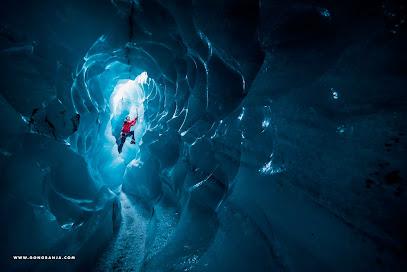
The Icelandic Phallological Museum
Explore the whimsical and educational world of The Icelandic Phallological Museum, a unique attraction in Reykjavik celebrating biological diversity and culture.
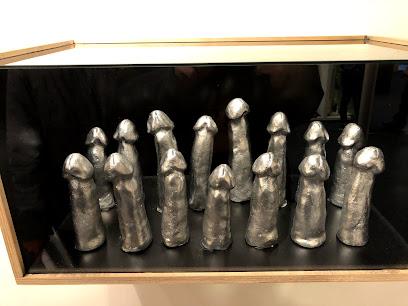
FlyOver Iceland
Immerse yourself in the stunning landscapes of Iceland with an unforgettable flying experience at FlyOver Iceland, a top tourist attraction in Reykjavik.
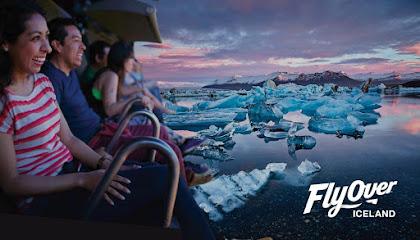
Reykjadalur Hot Spring Thermal River
Discover the breathtaking Reykjadalur Hot Spring Thermal River, where adventure meets relaxation in Iceland's stunning landscapes.
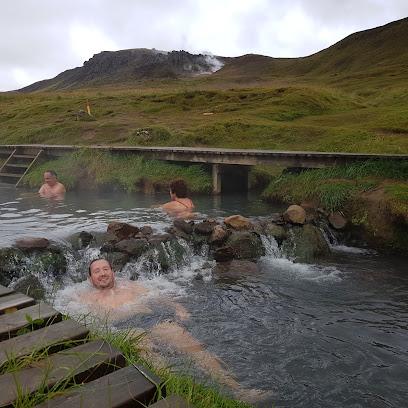
Bridge Between Continents
Explore the Bridge Between Continents, where you can stand between two tectonic plates in stunning Icelandic landscapes.
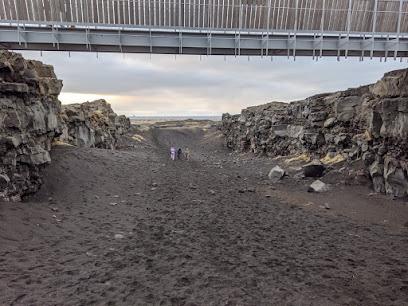
National Museum of Iceland
Explore Iceland's vibrant heritage at the National Museum, showcasing centuries of history from the Viking Age to modern times.
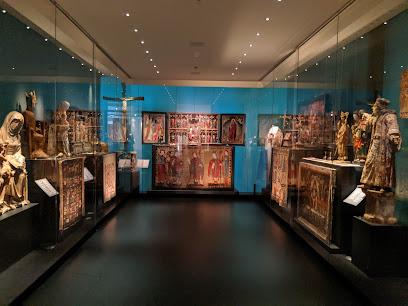
Arctic Adventures
Explore Iceland's breathtaking landscapes with Arctic Adventures, your gateway to unforgettable tours in Reykjavik.
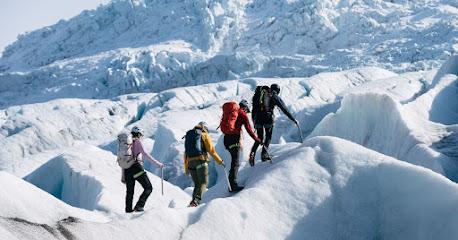
Raufarhólshellir
Discover the breathtaking Raufarhólshellir Lava Tunnel, a natural wonder filled with stunning rock formations and rich geological history in Iceland.
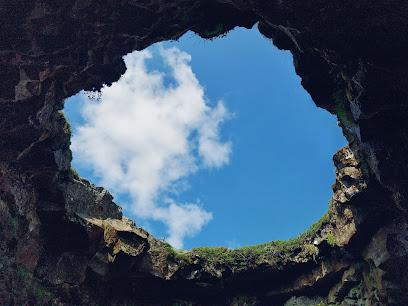
Essential places to dine
Café Loki
Discover authentic Icelandic flavors at Café Loki in Reykjavík, where tradition meets taste in a cozy setting.
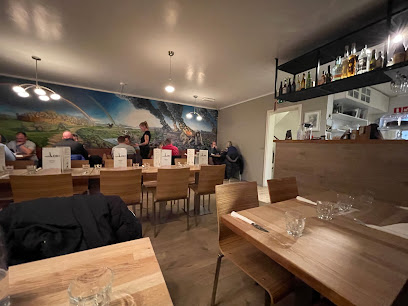
Icelandic Street Food
Discover authentic flavors at Icelandic Street Food in Reykjavík – your gateway to traditional Icelandic cuisine awaits.
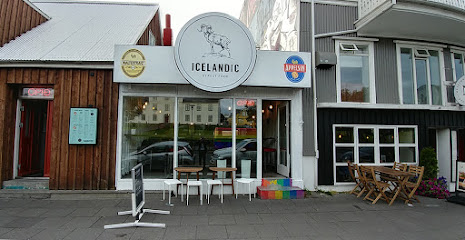
Seabaron
Experience authentic Icelandic seafood at Seabaron – where fresh catches meet local flavors in a cozy Reykjavík setting.
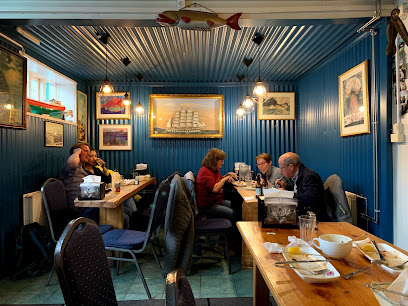
Íslenski barinn
Discover traditional Icelandic flavors at Íslenski Barinn in Reykjavík - where authentic cuisine meets a lively bar atmosphere.
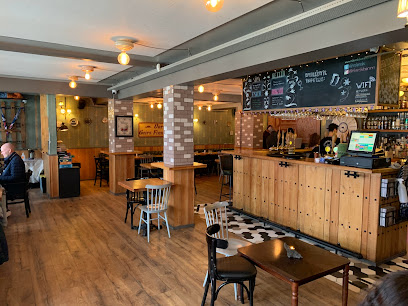
101 Reykjavik Street Food
Experience authentic Icelandic cuisine at 101 Reykjavik Street Food - where local flavors meet warm hospitality.
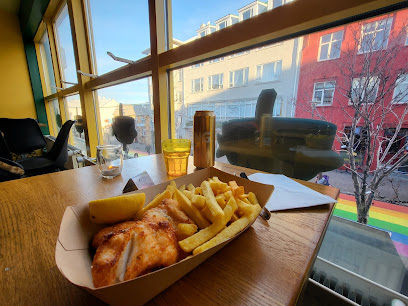
Messinn
Experience authentic Icelandic seafood at Messinn in Reykjavík – where tradition meets modern culinary excellence.
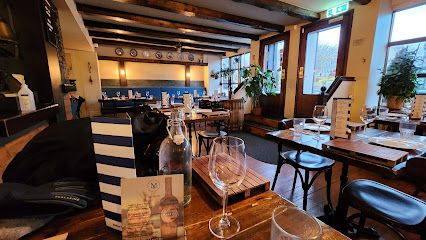
Svarta Kaffið
Experience authentic Icelandic cuisine at Svarta Kaffið with delicious soups served in bread bowls in the heart of Reykjavík.
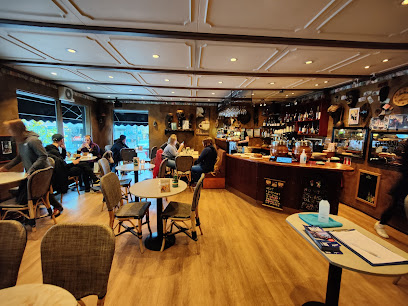
Apotek Restaurant
Discover Apotek Restaurant: A Modern European Culinary Experience in Reykjavík's Heart with Eclectic Flavors and Chic Ambiance.
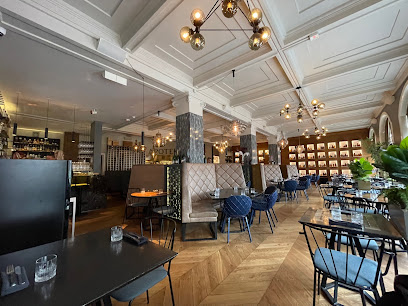
Old Iceland
Discover authentic Icelandic cuisine at Old Iceland – where tradition meets taste in the heart of Reykjavík.
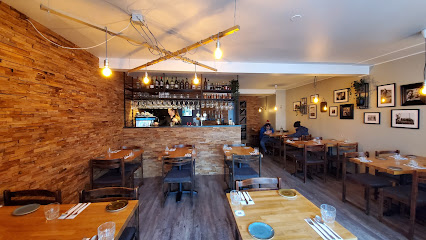
Grillmarkaðurinn
Discover Grillmarkaðurinn: An exquisite Icelandic restaurant in Reykjavik known for its unique selection of grilled meats and contemporary atmosphere.
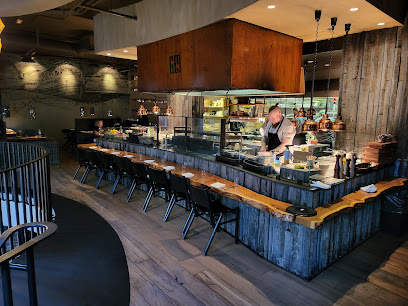
Sjávargrillið
Experience Iceland's culinary treasures at Sjávargrillið - where traditional flavors meet modern creativity in a cozy setting.
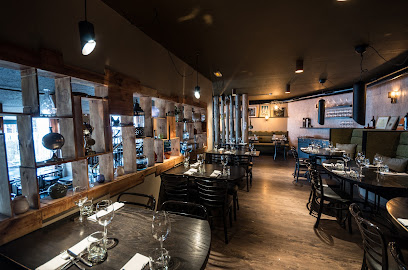
Reykjavik Kitchen
Experience the essence of Icelandic cuisine at Reykjavik Kitchen, where local ingredients meet modern culinary artistry in a cozy setting.
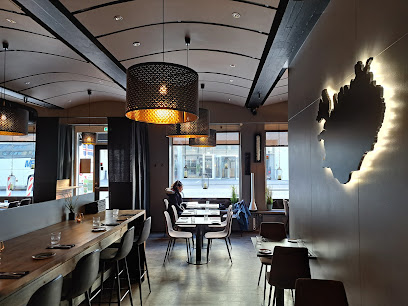
Sæta Svínið Gastropub
Discover exquisite flavors at Sæta Svínið Gastropub in Reykjavík, where traditional Icelandic cuisine meets modern gastronomy.
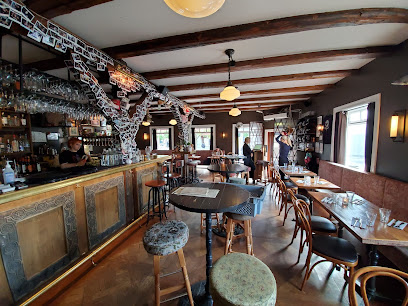
Fish Company
Discover exquisite seafood at Reykjavík's Fish Company - where local flavors meet fine dining excellence.
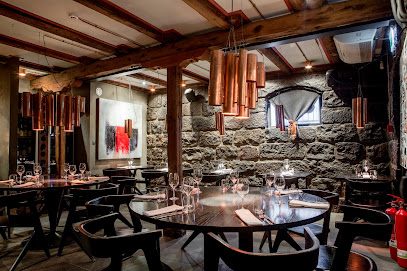
Kol Restaurant
Discover Kol Restaurant in Reykjavik: A fine dining experience blending Icelandic flavors with modern culinary artistry.
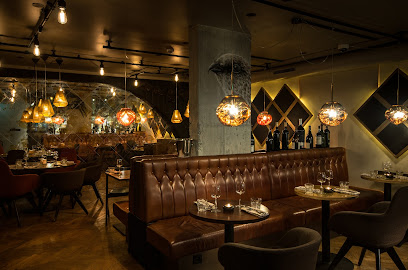
Markets, malls and hidden boutiques
Polarbear Gift Store
Explore Polarbear Gift Store in Reykjavík for authentic Icelandic souvenirs and charming gifts that capture the spirit of Iceland.
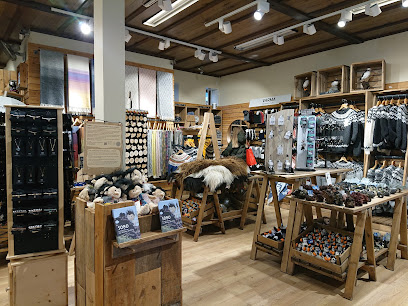
Húrra Reykjavík
Discover the vibrant styles of Iceland at Húrra Reykjavík, a trendy clothing store that showcases local and international fashion in a charming atmosphere.
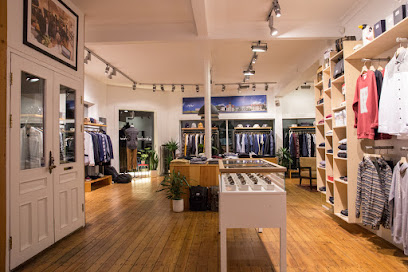
Flying Tiger Copenhagen
Explore a whimsical world of affordable gifts and unique finds at Flying Tiger Copenhagen in Reykjavík, perfect for souvenirs and creative goodies.
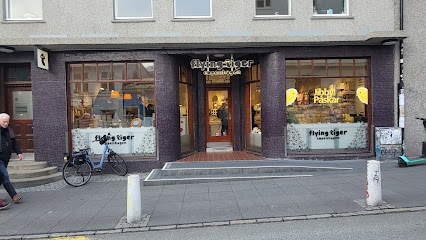
Nordic Store
Discover the essence of Icelandic craftsmanship at the Nordic Store in Reykjavík, your go-to destination for clothing and unique souvenirs.
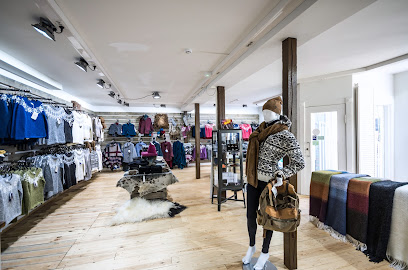
Spúútnik
Explore Spúútnik in Reykjavík for an unforgettable vintage shopping experience, featuring unique apparel and accessories in a cozy atmosphere.
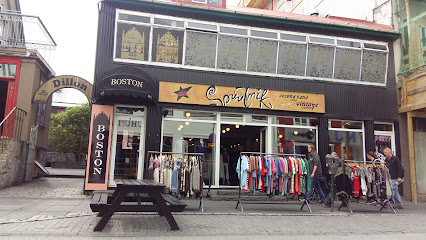
The VIKING
Discover authentic Icelandic souvenirs at The VIKING in Reykjavík, where culture and creativity meet in a vibrant shopping experience.
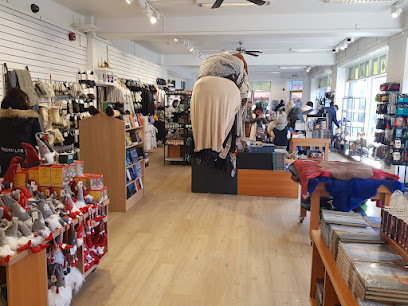
Old Harbour Souvenirs
Explore Old Harbour Souvenirs for authentic Icelandic gifts, unique clothing, and handcrafted treasures that embody the spirit of Iceland.
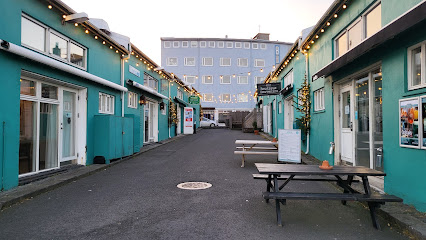
The Viking
Discover authentic Icelandic souvenirs and valuable travel tips at The Viking in Reykjavík, the ultimate tourist information center.
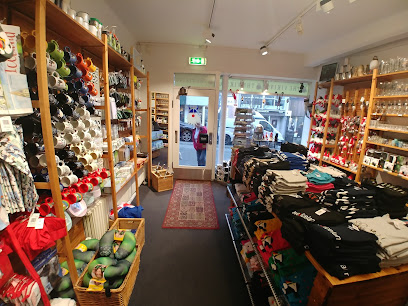
MJÚK Iceland ehf
Explore Icelandic craftsmanship at MJÚK Iceland, your go-to destination for authentic wool garments and unique souvenirs in Reykjavík.
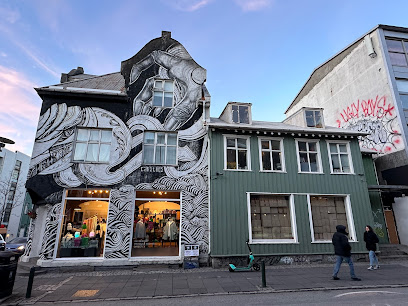
Thorvaldsens Bazar
Explore the unique offerings of Thorvaldsens Bazar, a boutique in Reykjavík featuring authentic Icelandic crafts and gifts.
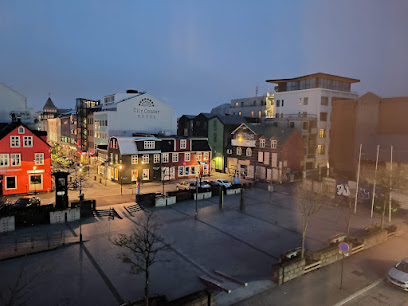
Shopicelandic
Discover unique Icelandic souvenirs at Shopicelandic, a charming gift shop in the heart of Reykjavík offering a variety of handmade treasures.

Kronkron
Discover Icelandic fashion at Kronkron, a stylish clothing store in Reykjavík offering unique handmade items and a warm atmosphere.
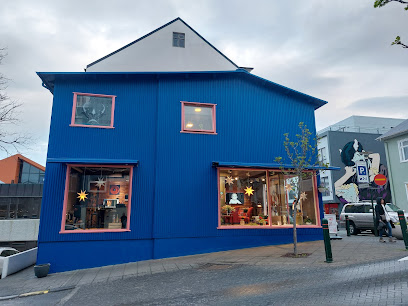
Woolcano Gift Shop
Explore the charm of Iceland at Woolcano Gift Shop, where unique souvenirs and local artistry come together to create unforgettable memories.
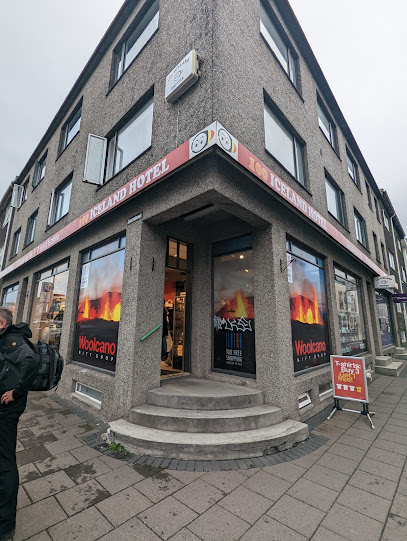
Rammagerdin
Explore Rammagerðin in Reykjavík for unique Icelandic gifts and souvenirs that capture the spirit of the land and its culture.
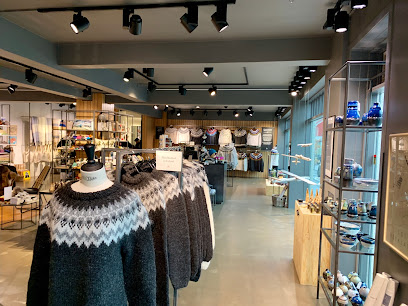
The Heart of Reykjavik
Explore The Heart of Reykjavik, a charming gift shop featuring unique Icelandic souvenirs and handcrafted treasures that reflect the island's rich culture.
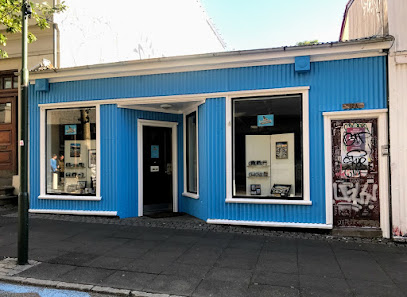
Essential bars & hidden hideouts
Lebowski Bar
Experience the charm of 'The Big Lebowski' at the Lebowski Bar in Reykjavík, where themed drinks and quirky decor come together for a unique nightlife experience.
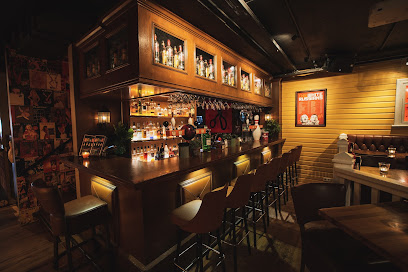
Dillon Whiskey Bar
Experience the lively ambiance of Dillon Whiskey Bar, Reykjavík's premier destination for whiskey enthusiasts and live music lovers.
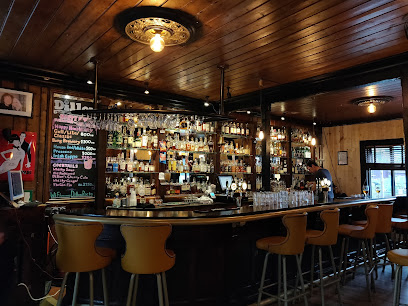
The Drunk Rabbit Irish Pub
Discover the warmth of Irish hospitality and vibrant nightlife at The Drunk Rabbit Irish Pub in the heart of Reykjavík.
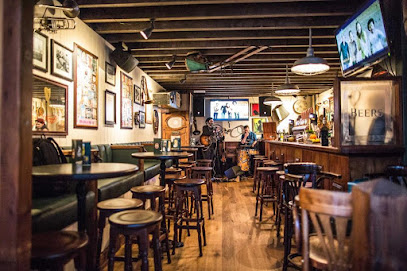
The Irishman Pub
Discover the authentic Irish experience at The Irishman Pub in Reykjavík, where great food, drinks, and live music create a vibrant atmosphere.

Frederiksen Ale House
Discover the cozy charm of Frederiksen Ale House, a top bar in Reykjavik offering a vast selection of craft beers and delicious bites in a welcoming atmosphere.
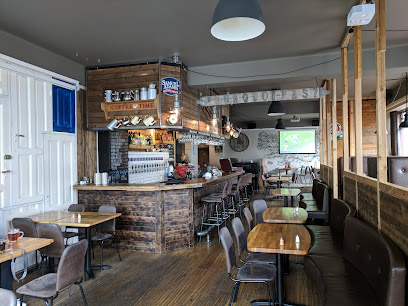
Bravó
Discover Bravó in Reykjavík: an eclectic cocktail bar offering live music and a vibrant atmosphere perfect for unwinding after a day of exploration.
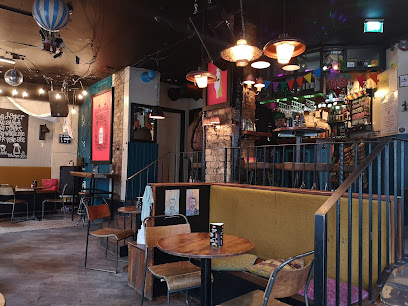
Microbar Reykjavík
Discover the essence of Reykjavík's craft beer scene at Microbar, where a cozy atmosphere meets a diverse selection of local and international brews.
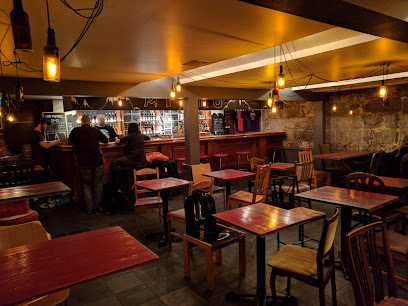
Kaffibarinn
Experience the vibrant nightlife at Kaffibarinn, a cozy bar in Reykjavík serving local beverages and great music in a friendly atmosphere.
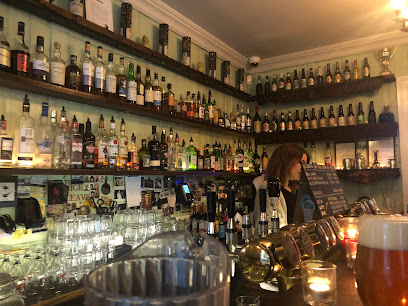
Skúli Craft bar
Discover a vibrant bar scene at Skúli Craft Bar with an extensive selection of craft beers in the heart of Reykjavík.
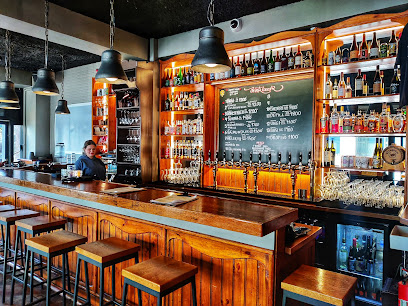
Einstök Bar
Experience the vibrant nightlife at Einstök Bar, where Icelandic craft beers and lively atmosphere come together in the heart of Reykjavík.
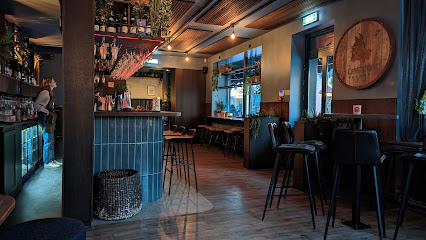
SKY Bar
Discover the enchanting atmosphere of SKY Bar in Reykjavík, where stunning city views and a vibrant lounge experience await you.
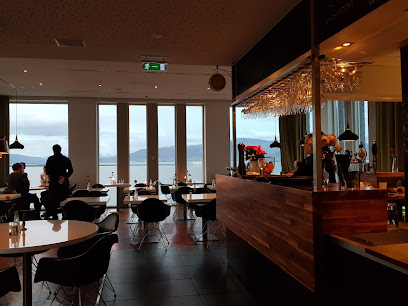
Jungle Cocktail Bar
Discover the vibrant Jungle Cocktail Bar in Reykjavík, offering unique drinks and an unforgettable nightlife experience amidst Iceland's urban charm.
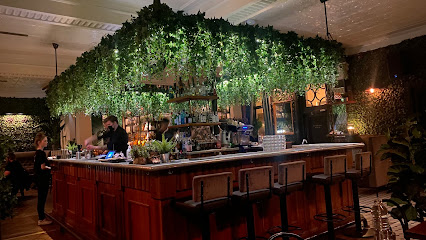
Ölstofa
Discover the lively atmosphere of Ölstofa, a beloved Reykjavík bar where locals and tourists gather for great drinks and unforgettable experiences.
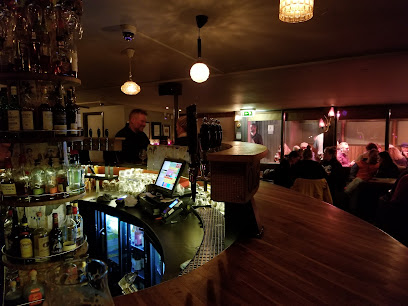
Session Craft Bar
Discover the vibrant atmosphere of Session Craft Bar, where craft beer meets Icelandic hospitality in the heart of Reykjavik.

Veður
Discover the lively ambiance of Veður Bar in Reykjavík, where local flavors and vibrant nightlife come together for an unforgettable experience.
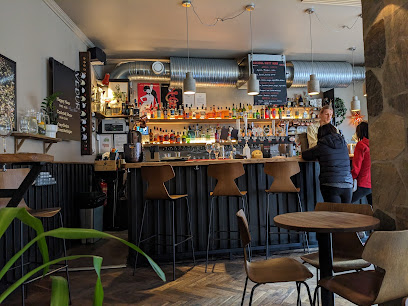
Travel experiences inspired by this city
Explore more travel diariesLocal Phrases
-
- HelloHalló
[HAH-loh] - GoodbyeBless
[bles] - YesJá
[ya] - NoNei
[nay] - Please/You're welcomeGjörðu svo vel
[GYOR-thu svo vel] - Thank youTakk
[tahk] - Excuse me/SorryFyrirgefðu
[FEER-ir-gef-thu] - How are you?Hvað segirðu gott?
[kvath SEY-ir-thu got] - Fine. And you?Fínt. En þú?
[feent. en thu] - Do you speak English?Talar þú ensku?
[TAH-lar thu ENSK-u] - I don't understandÉg skil ekki
[yeg skil EHK-ki]
- HelloHalló
-
- I'd like to see the menu, pleaseÉg myndi vilja sjá matseðilinn, takk
[yeg MUN-dee VIL-ya syow MATH-se-thil-inn, tahk] - I don't eat meatÉg borða ekki kjöt
[yeg BOR-tha EHK-ki chyot] - Cheers!Skál!
[skowl] - I would like to pay, pleaseÉg myndi vilja greiða, takk
[yeg MUN-dee VIL-ya gray-tha, tahk]
- I'd like to see the menu, pleaseÉg myndi vilja sjá matseðilinn, takk
-
- Help!Hjálp!
[HYAULP] - Go away!Farðu í burtu!
[far-thu ih BUR-too] - Call the Police!Hringdu í lögregluna!
[hring-thu ih LOG-ray-loo-na] - Call a doctor!Hringdu í lækninn!
[hring-thu ih lighk-nin] - I'm lostÉg er týndur
[yeg er teen-thur] - I'm illÉg er veikur
[yeg er vay-kur]
- Help!Hjálp!
-
- I'd like to buy...Ég myndi vilja kaupa...
[yeg MUN-dee VIL-ya KOW-pa] - I'm just lookingÉg er bara að skoða
[yeg er BA-ra ath SKO-tha] - How much is it?Hvað kostar það?
[kvath KOS-tar thah] - That's too expensiveÞað er of dýrt
[thath er ov DEER-t] - Can you lower the price?Getur þú lækkað verðið?
[GHE-tur thu ligh-KATH VER-thith]
- I'd like to buy...Ég myndi vilja kaupa...
-
- What time is it?Hvað er klukkan?
[kvath er KLOO-kahn] - It's one o'clockKlukkan er eitt
[KLOO-kahn er eyt] - Half past (10)Hálf tíu
[howlf tee-oo] - MorningMorgunn
[mor-gun] - AfternoonSíðdegis
[seed-thay-iss] - EveningKvöld
[kwuld] - YesterdayÍ gær
[ee gai] - TodayÍ dag
[ee thak] - TomorrowÁ morgun
[ow mor-gun] - 1Einn
[ayth] - 2Tveir
[tayr] - 3þrír
[threer] - 4Fjórir
[fyow-rir] - 5Fimm
[fim] - 6Sex
[sehx] - 7Sjö
[syow] - 8Átta
[ow-tha] - 9Níu
[nyew] - 10Tíu
[tee-oo]
- What time is it?Hvað er klukkan?
-
- Where's a/the...?Hvar er ...?
[kvar er] - What's the address?Hvað er heimilisfangið?
[kvath er HAY-mil-is-fang-ith] - Can you show me (on the map)?Getur þú sýnt mér (á kortinu)?
[GHE-tur thu seent mair (ow KOR-tinu)] - When's the next (bus)?Hvenær fer næsta (strætisvagn)?
[kven-ayr fer NIE-sta (strait-is-vahn)] - A ticket (to ....)Einn miða (til ....)
[ayth MI-tha (til)]
- Where's a/the...?Hvar er ...?
History of Reykjavik
-
Reykjavik, the capital and largest city of Iceland, was settled in 874 AD by the Norseman Ingólfur Arnarson. According to the Landnámabók (Book of Settlements), he named the place Reykjavik, meaning 'Smoky Bay', due to the steam rising from the hot springs in the area. This marked the beginning of permanent human settlement in Iceland.
-
From the 9th to the 13th century, Reykjavik was part of the broader narrative of the Icelandic sagas. These medieval literature pieces recount the history of the early settlers, their feuds, and their lives. While Reykjavik itself wasn't a central location in these tales, it was part of the backdrop of the broader Icelandic landscape that shaped the sagas.
-
In 1602, Denmark imposed a trade monopoly on Iceland, significantly affecting Reykjavik's development. Reykjavik remained a small trading post until the monopoly was lifted in 1786, which is also the year Reykjavik was officially granted municipal status, marking the beginning of its transformation into an urban area.
-
The 19th century brought significant changes as Reykjavik began to modernize. The Alþingi, Iceland's parliament, was reestablished in Reykjavik in 1845 after being dissolved in 1800. This relocation was pivotal in making Reykjavik the political center of Iceland. The city also saw the construction of important buildings like the Reykjavik Cathedral and various schools.
-
Reykjavik played a crucial role in Iceland's fight for independence from Denmark. In the early 20th century, the city was the heart of the independence movement. In 1918, Iceland became a sovereign state under the Danish Crown with the signing of the Danish-Icelandic Act of Union. Reykjavik subsequently became the capital of the newly sovereign state.
-
During World War II, British and later American forces occupied Reykjavik to prevent a possible German invasion. This occupation brought significant economic benefits to the city through the construction of infrastructure and increased employment. The presence of Allied forces also introduced modern amenities and cultural influences that shaped post-war Reykjavik.
-
Following World War II, Reykjavik experienced rapid growth and modernization, transitioning from a modest town to a bustling city. Iceland formally became a republic in 1944, with Reykjavik as its capital. The post-war period saw the construction of modern buildings, improved infrastructure, and the establishment of cultural institutions, solidifying Reykjavik's status as the heart of Iceland.
-
In recent decades, Reykjavik has blossomed into a vibrant, cosmopolitan city known for its unique blend of modern and traditional culture. It has become a hub for tourism, arts, and innovation, hosting numerous international events and festivals. Landmarks like the Hallgrímskirkja church, the Harpa Concert Hall, and the Sun Voyager sculpture have become iconic symbols of the city's dynamic spirit.
Reykjavik Essentials
-
Reykjavik is accessible via Keflavik International Airport (KEF), located about 50 kilometers southwest of the city. Direct flights are available from major cities in Europe, North America, and other parts of the world. From the airport, you can take the Flybus or airport taxis to reach the city center. Alternatively, car rentals are available at the airport for those who prefer to drive.
-
Reykjavik has a well-organized public transport system, primarily consisting of buses operated by Strætó. Tickets can be purchased via the Strætó app, at bus terminals, or directly from the bus driver (cash only). Taxis are also available but can be expensive. Cycling is popular, and bike rentals are available throughout the city. For exploring beyond Reykjavik, renting a car is recommended due to the limited public transport options in rural areas.
-
The official currency in Iceland is the Icelandic Krona (ISK). Credit and debit cards are widely accepted, and many places prefer card payments over cash. ATMs are readily available throughout Reykjavik. It is advisable to notify your bank of your travel plans to avoid any issues with card transactions.
-
Reykjavik is considered one of the safest cities in the world, with very low crime rates. However, it is always wise to take standard precautions such as keeping an eye on your belongings in crowded places and avoiding poorly lit areas at night. There are no specific neighborhoods in Reykjavik known for high crime rates targeting tourists.
-
In case of emergency, dial 112 for police, fire, and medical assistance. Reykjavik has modern medical facilities, including the Landspítali University Hospital. It is recommended to have travel insurance that covers medical emergencies. Pharmacies (Apótek) are available for minor health issues and over-the-counter medications.
-
Fashion: Do dress in layers and be prepared for changing weather conditions. Don’t wear shoes indoors when visiting Icelandic homes. Religion: Do respect local customs and traditions. Don’t speak loudly in churches. Public Transport: Do give up your seat for elderly or disabled passengers. Don’t eat or drink on public buses. Greetings: Do greet people with a smile and a handshake. Don’t be overly formal; Icelanders are generally casual. Eating & Drinking: Do try local dishes like lamb soup and skyr. Don’t tip, as it is not customary in Iceland.
-
To experience Reykjavik like a local, visit the Kolaportið Flea Market for unique Icelandic goods and the Reykjavik Roasters for some of the best coffee in town. Take a stroll along Laugavegur, the main shopping street, and explore the vibrant street art scene. Join locals in one of the city's many geothermal pools, such as the Blue Lagoon or the Laugardalslaug pool, for a quintessential Icelandic experience.
Trending Landmark in Reykjavik
Nearby Cities to Reykjavik
-
Things To Do in Kopavogur
-
Things To Do in Hafnarfjordur
-
Things To Do in Keflavik
-
Things To Do in Hveragerdi
-
Things To Do in Grindavik
-
Things To Do in Borgarnes
-
Things To Do in Selfoss
-
Things To Do in Stykkisholmur
-
Things To Do in Olafsvik
-
Things To Do in Vik
-
Things To Do in Blonduos
-
Things To Do in Saudarkrokur
-
Things To Do in Isafjordur
-
Things To Do in Akureyri
-
Things To Do in Dalvik


